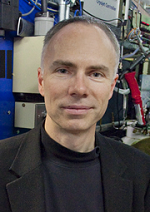 |
| Johns Hopkins' James Berger |
Drug resistance has been a critical issue in facing the growing threat of tuberculosis around the world. But researchers at Johns Hopkins say that they've unveiled a new way to bolster a current drug class to make them much better at fighting off resistance.
To better understand how to fight resistance to fluoroquinolones, the investigators used three-dimensional imaging tech to better clarify how they work in the first place and why some work better than others.
The basic mechanism is already understood: Fluoroquinolones block a repair mechanism, causing the bacterial DNA to "fall apart" and scrambling the way the enzyme gyrase works. By breaking it down atom-by-atom, the team also found that there are two key binding points with bacterial proteins. One "naturally swapped protein building block" feeds resistance at one site, while none of the drugs bind to the second spot.
If you can make new derivatives that bind efficiently to both sites, they add, you should be able to make the treatments much more effective, with a backup target in play that could keep the drug effective in the event one of them fails.
"All together, these studies provide a wealth of information that drug companies can use to continue the development of fluoroquinolones," says James Berger, a professor of biophysics and biophysical chemistry at the Johns Hopkins University School of Medicine. "They hold a lot of promise for fighting drug resistance in bacteria that cause TB and many other diseases."
- here's the release